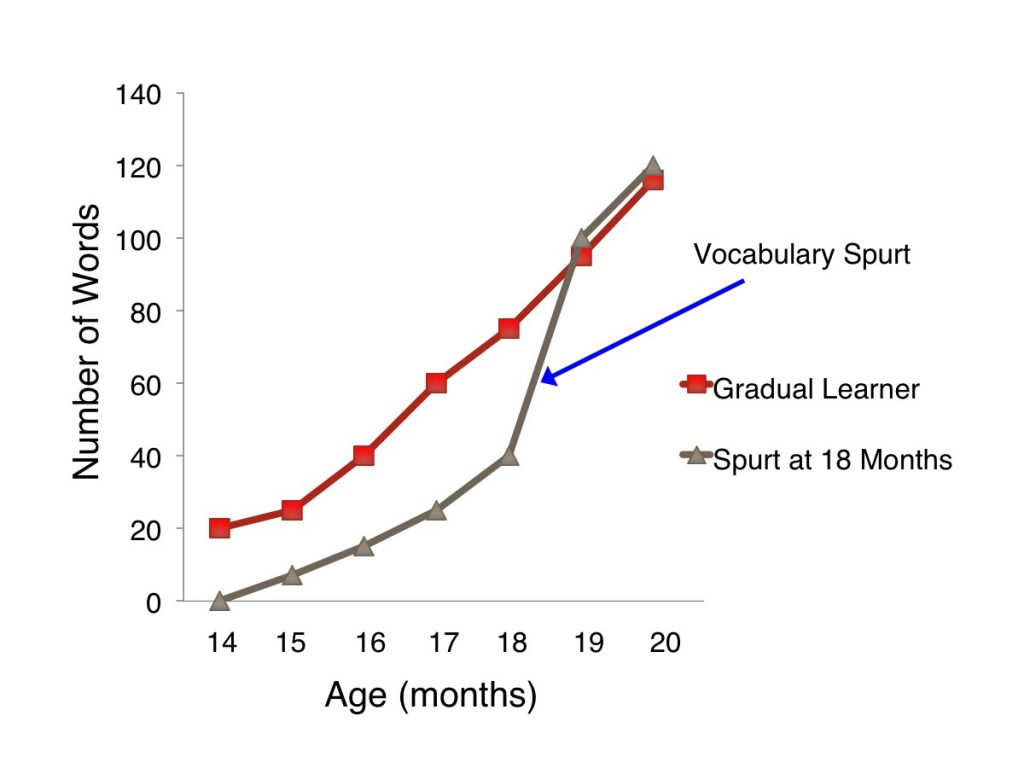
How do children go from producing a single word to producing hundreds of them?
First words typically emerge between 10 and 15 months of age. Word learning is slow in the beginning. An average child knows just over 30 words by the time they are 15 months old. So they are only learning about 10 words per month. Most words in children’s early vocabularies refer to things children encounter often. Children say names of familiar people, food or drink items, body parts, animals, clothing, toys, and vehicles. Other initial words describe routines (night-night, peekaboo), activities or actions (up, stop), or sound effects (moo, yum yum). Early vocabularies are remarkably similar across children learning any one language. They are also similar across languages of the world. This is true for spoken as well as signed languages.
After children have learned their first 50 words, their vocabulary typically begins to grow at a rapid pace. This rapid growth in vocabulary size is known as the vocabulary spurt. It most often occurs around the middle of the second year of life.
On the graph, we show what vocabulary growth might look like for two children. The grey line represents one child and the red line represents the other child. The child’s age in months is on the bottom of the graph. The number of words children say is on the left side of the graph. First look at the grey line. You will notice that at age 14 months, this child has not yet produced any words. You can see that between 14 to 18 months of age, each triangle is just a bit higher than the previous one. This shows gradual increases in the child’s vocabulary size between 14 and 18 months. After the 18-month mark, you will notice that the slope of the grey line becomes steep. By 19 months of age, the child knows 100 words! Compared to the slow rate of word learning between 14 and 18 months, this child’s vocabulary showed rapid growth between 18 and 19 months of age. This is a vocabulary spurt. Now look at the red line. You will notice that the red line shows a gradual increase from left to right. There are no sharp increases in slope. This means that the child’s vocabulary grew in a more gradual manner. This is normal. Some children show a clear vocabulary spurt. Others grow their vocabularies in a more gradual way.
-
- Back-and-forth or contingent interactions
- exchanges where a caregiver times her responses to a child’s behavior
- Canonical babbling
- producing the same consonant and vowel over and over, such as dadada
- Infant-directed speech
- a special tone and style of speech used to talk to young children. It’s also called parentese
- Joint attention
- shared attention between social partners to an object or event
- Overextension
- using a word to describe more object categories than it actually represents
- Underextension
- failing to extend a word to other objects in the same category
- Vocabulary spurt
- rapid growth in word learning